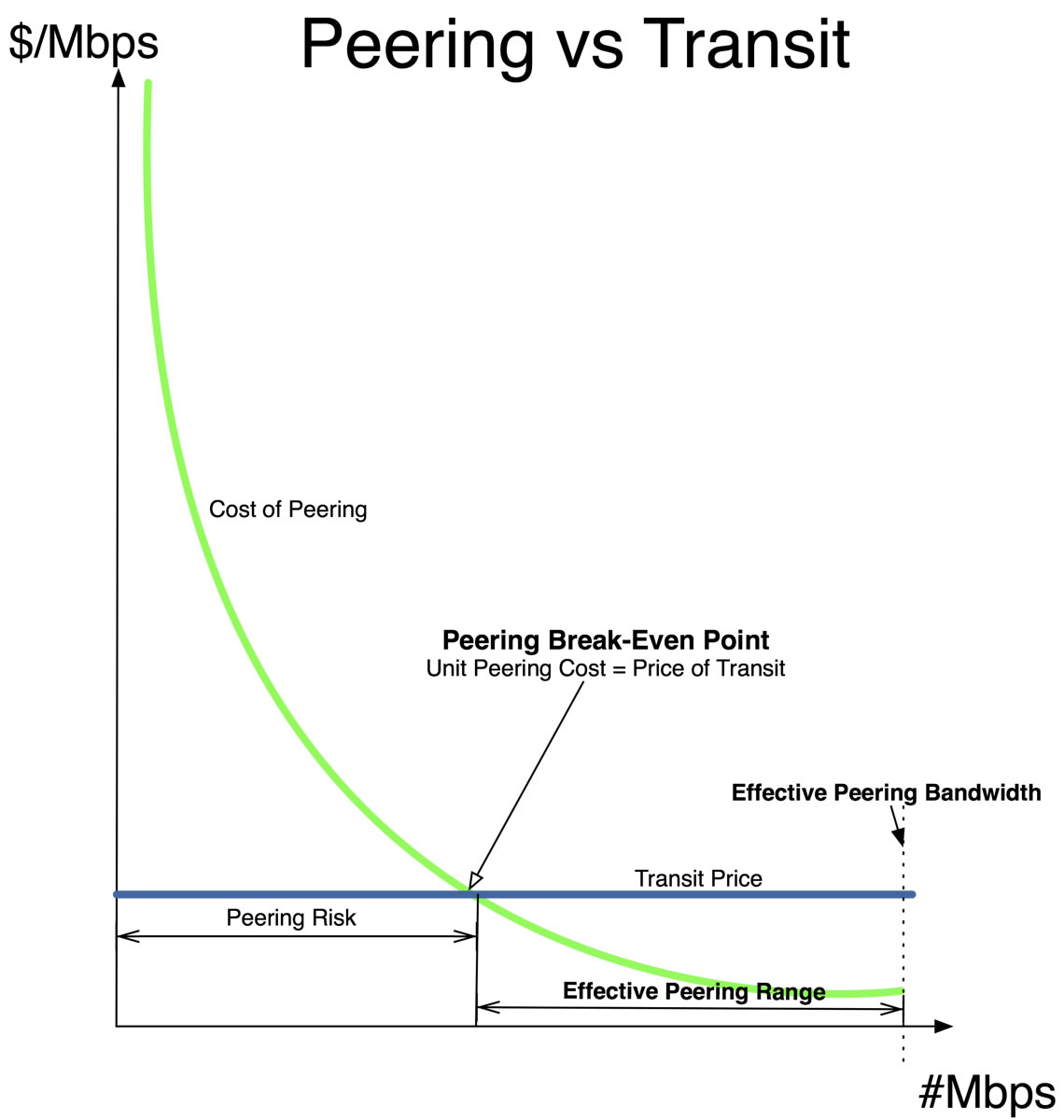To determine if peering makes sense, we need to identify the point at which the cost of peering equals the cost of transit. At this point, an ISP is indifferent between peering and simply sending that traffic through a transit provider. To calculate this metric, we first add the costs of peering and allocate those costs across the capacity of the peering infrastructure. The result is the curve in the Peering Break-Even graph shown in Figure 5-2.

In this graph we also plotted the cost of the next-best alternative for offloading that same traffic, the market price of Internet Transit. (We assume for simplicity that the price of transit is fixed, not tiered.)
The point at which these two lines intersect is called the Peering Break-Even Point.
Definition: The Peering Break-Even Point is the point at which the unit cost of peering exactly equals the unit price for Internet Transit.
To calculate the Peering Break-Even Point, we allocate the monthly costs of peering across the market price for transit.
PeeringBreakEvenPoint = MonthlyCostofPeering/UnitPriceofTransit
Beyond the Peering Break-Even Point (see Figure 5-2), the ISP peers more than enough traffic to completely cover the cost of peering. The monthly transit bill is lowered more than the total cost of peering.
Savings = (MbpsPeered-PeeringBreakEvenPoint)*MarketTransitPrice
To the left of the Peering Break-Even Point is an area I call "Peering Risk". The risk here is of not peering enough traffic for free to offset the monthly cost of peering. When the unit price of transit is less than the unit cost of peering, peering does not provably make financial sense. This situation is where many of the smaller ISPs find themselves today.
The Peering Break-Even Point helps make the business case for peering objective and clear—if an ISP can peer more traffic than indicated by the Peering Break-Even Point, then the ISP should prefer to peer instead of solely purchasing transit from an upstream ISP.
Let's continue with our previous example and further assume that the market price for Internet Transit is $3.50 per Mbps.
From a strictly financial position, peering makes sense when the unit cost of peering is less than the cost of transit; that is, when more than $11,000/$3.50 = 3,143Mbps can be peered at this exchange point (Table 5-3).

Remember the context—in this example, the prospective peer is building into the IXP from across a continent.
The Peering Break-Even Point is lower for those who are "near" or "local" to the IXP, as shown in the other columns in the spreadsheet.
We are also assuming that the ISP is not already present in the colocation space. If the ISP already has a Point of Presence (POP) there, the business case for peering is much easier to make.